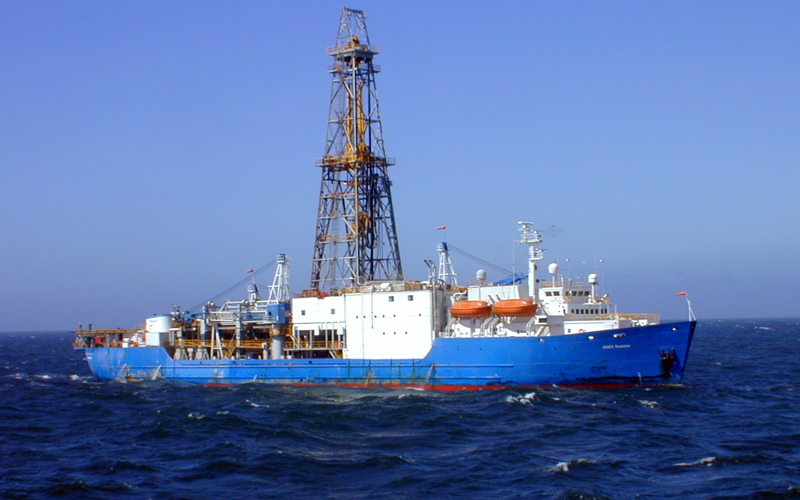JOIDES RESOLUTION IODP Exp.398
- Area:
- Mediterranen Sea, Agean Sea
- Time:
-
11.12.2022 - 10.02.2023
- Institution:
- GEOMAR
- Chief scientist:
- Steffen Kutterolf
The objectives of IODP Expedition 398 ‘Hellenic Arc Volcanic Field’ (11 December 2022 to 10 February 2023) were to study the volcanic record of the central Hellenic island arc, to document the links and feedbacks between volcanism/magmatism, crustal tectonics and sea level, to investigate the processes and products of shallow submarine eruptions of silicic magma, and to groundtruth the seismic stratigraphy of Santorini caldera. Reconstructing the subsidence history of the southern Aegean Sea, and searching for deep life inside and outside of Santorini caldera, were additional objectives.
The expedition drilled ten primary and alternate sites originally proposed, plus two extra sites that were requested during the expedition. Outside of Santorini caldera, drilling penetrated the thick basin fills of the crustal rift system hosting the Christiana-Santorini-Kolumbo volcanic field, identifying numerous pumice and ash layers, some known from onland and others hitherto unknown, pushing back the onset of volcanism in the area into the early Pleistocene or even Pliocene. Huge events of mass wasting into the basins, accompanied by very high sedimentation rates, were also documented. These basin sites served to groundtruth the seismic stratigraphy of the basins and to open the way to unravelling relationships between volcanic activity and crustal rift pulses. Two sites of condensed sequences on the basin margins served to sample many volcanic layers within the detailed age-depth constraints provided mainly by biostratigraphy, as diagenetic effects complicated the magnetic reversal record significantly. Drilling penetrated the Alpine basement at three basin sites north of Santorini, while in the Christiana Basin to the south it penetrated a thick sequence of Messinian evaporites. Drilling inside Santorini caldera penetrated to ~120 mbsf, less than planned due to hole instability issues but deep enough to groundtruth the seismic stratigraphy and to sample the different layers. One intracaldera hole yielded a detailed tephra record of the history of the Kameni islands, as well as possible evidence for deep bacterial colonies within the caldera. Despite variable recovery in the unstable pumice and ash deposits, the expedition was a great success that will enable us to address almost all the science objectives once the laboratory work has been done.
A dense programme of pre-expedition and shipboard outreach during the expedition gave rise to 59 live ship to shore tours, reaching 6400 people in seven countries including many school children. Fifty-one journalists were contacted and nine stories were written about the expedition, with a readership of almost 200,000 people. While in Santorini caldera, the ship hosted twelve documentarians and journalists, the future products of whom will include a 1.5-hour documentary and a four-part TV series on Expedition 398. The expedition social media pages were very active. Prior to the expedition, an exhibition, ‘In search of Earth’s secrets’, ran for a week on Santorini and was visited by over 1800 school children.



